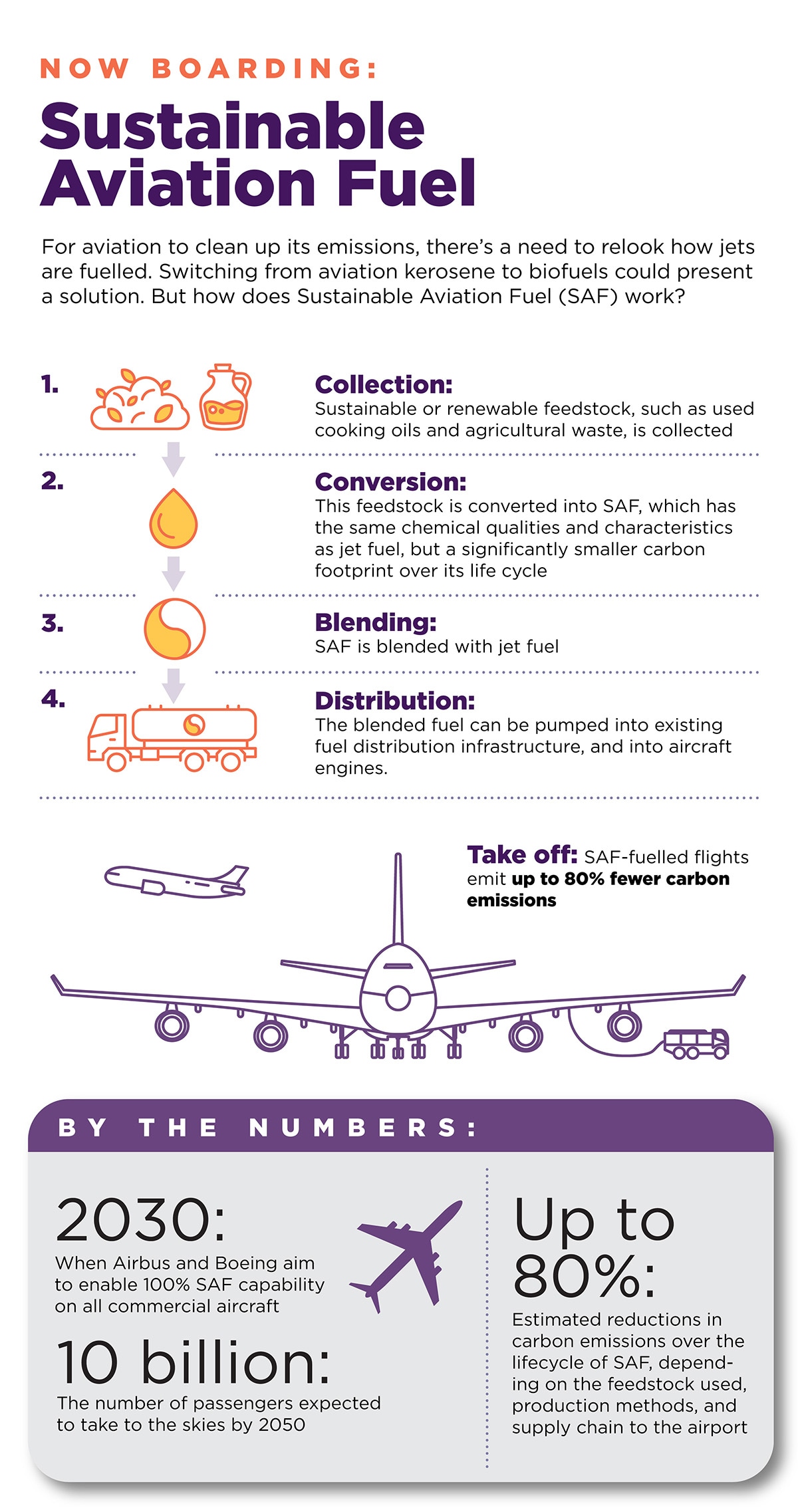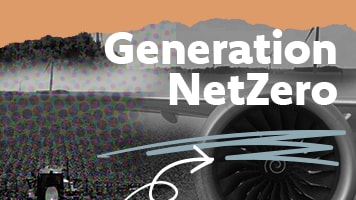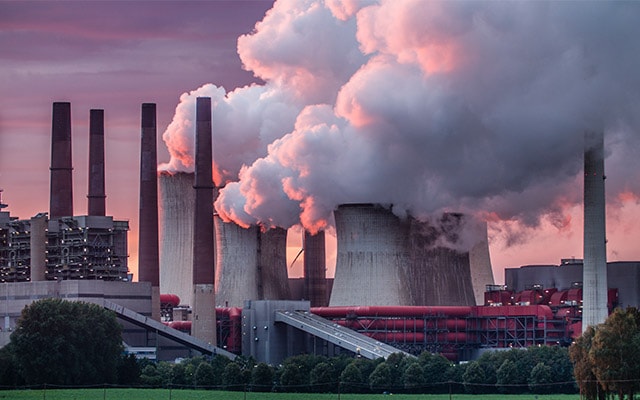Burning Questions: A Green Way to Fly
Burning Questions: A Green Way to Fly
In brief:
- By 2050, global travel is expected to exceed 10 billion passenger journeys a year
- Left unchecked, aviation’s contribution to global emissions could soar from 2.5% now to 20% by 2050, undermining decarbonisation efforts and contributing to global warming
- Sustainable Aviation Fuel (SAF) and carbon offsetting present near-term solutions for sustainable air travel
The aviation industry is committed to decarbonisation, and has pledged to achieve net zero carbon emissions by 2050. Sustainable Aviation Fuel (SAF) and carbon offsetting provide the industry with feasible options for achieving this goal.
Travel is on the rise again, and with it, carbon emissions. Global passenger traffic, estimated at 6.5 billion last year, is headed to exceed 10 billion by 20501. Left unchecked, it could drive the aviation sector’s contribution to global emissions from 2.5% now to 20%.
There is consensus that business as usual is not an option, and in October, the aviation industry agreed on a net-zero carbon emissions target by 20502 3.
Nicholas Ong from Temasek’s decarbonisation-focussed investment platform company GenZero, Lee Wen Fen, SVP for Corporate Planning at Singapore Airlines (SIA), and Sami Jauhiainen, VP, APAC, for Renewable Aviation at the world’s largest producer of SAF, Neste, answer your burning questions on what the aviation industry is doing to reduce its carbon emissions, and let you in on some ways that you can also contribute.
Over its life cycle, SAF can reduce carbon emissions by up to 80% compared to conventional jet fuel, with no impact on the flight experience. IATA estimates that up to 65% of reductions towards net zero emissions by 2050 will come from using SAF.
Sami Jauhiainen, VP, APAC, Neste
How realistic is net zero emissions by 2050 for the aviation industry?
Nicholas: Net zero in aviation is an ambitious goal, but a necessary one. There is broad consensus from the aviation industry – from airlines, airports and air traffic management, to aircraft, engine makers and energy producers – which is a critical first step. The sector is committed to paving a realistic and achievable pathway to net zero. This includes supporting technological breakthroughs to develop cost-efficient alternative fuels and fuel-efficient aircrafts. However, the industry will not be able to eliminate all emissions from its operations. The remaining will need to be offset through high-quality carbon credits.
Wen Fen: SIA has always been committed to sustainability, and in 2021, we made a commitment to achieve net zero carbon emissions by 2050. But, as Nicholas said, the most effective way to achieve this is for the entire value chain – from policymakers and vendors, to individual customers – to play a part.
How is the aviation industry reducing its impact on the environment?
Wen Fen: The industry is doing a lot. A key lever at SIA is our younger fleet. Our newer A350 freighters, for example, produce up to 30% fewer carbon emissions than the old 744 freighters, which gives us 400,000 tonnes of savings in terms of carbon emissions. We’re also working to make the inflight journey more sustainable by reducing single-use plastics and cutting down on weight as much as we can because heavier aircrafts burn more fuel. The packaging for our meals, for example, is now 50% lighter, which means a reduction of 300 tonnes of carbon emissions annually.
Nicholas: Besides improving aircraft and operational efficiencies, tapping cleaner sources of energy to fuel planes is also important. The industry has been working to scale up and commercialise SAF, which is already available and can help decarbonise aviation. Work continues on battery and hydrogen powered alternatives.
But isn’t fuel the biggest contributor to emissions?
Sami: With conventional fuel, yes. The difference with SAF is that it is made from sustainable feedstock, not fossil fuels. Think used cooking oil, municipal solid waste, agroforestry waste – even recycled carbon dioxide itself. Because of its chemical composition, SAF burns cleaner. Over its life cycle, SAF is able to reduce carbon emissions by up to 80% compared to conventional fuel, with no impact on the flight experience for passengers or airlines. In fact, SAF can already be deployed on current aircraft technology up to a blend of 50%.
Nicholas: IATA estimates that up to 65% of reductions towards net zero emissions by 2050 will come from using SAF. To better prepare ourselves for that future, we embarked on a pilot with SIA and the Civil Aviation Authority of Singapore (CAAS), as well as other stakeholders to see how we can operationalise the rollout of SAF in Singapore. As part of this pilot, we deployed 1.25 million litres of SAF on Singapore Airlines flights and Scoot flights from the third quarter of 2022. We expect to save about 2,500 tonnes of carbon emissions through this pilot.
How does Sustainable Aviation Fuel work?

Then why isn’t everyone simply switching to SAF?
Nicholas: Cost is the single largest inhibitor. SAF is priced three to five times higher than conventional fuel. Less than 0.1% of global jet fuel demand is accounted for by SAF today. If producers can scale supply, they will benefit from economies of scale, and this will bring down costs significantly, making it feasible for airlines to use it commercially. But this will take the combined efforts of regulators and investors.
Sami: At the moment, we are carrying out a major expansion of our Singapore refinery that will double its SAF capacity to a million tons a year in 2023. The SIA pilot is demystifying SAF, and demonstrating how it actually works in an aircraft. This is important for getting wider market acceptance and accelerating growth.
How can I reduce my own carbon emissions when I fly?
Nicholas: I would challenge everyone to be aware of their carbon footprint the next time they take a flight. Many airlines readily provide this information on their websites today. Use it to understand how your actions impact the environment, and explore solutions to reduce your carbon footprint to as close to zero as possible. One easy way is to purchase high-quality carbon offsets.
Wen Fen: Many of our customers can already participate in our sustainability journey through SIA’s voluntary carbon offset scheme. We are looking at similar support as we roll out our SAF credit scheme. Another way to reduce your carbon footprint is to fly with airlines that use modern aircraft technology. For example, A350s and 787s produce up to 30% fewer emissions than older generation aircraft.
Travel light
Emissions from air travel continue to grow, but it is still possible to get around the world with far less impact on the environment. It requires deliberate action not just from governments and airline operators, but also individual consumers, whether by flying less and choosing direct flights, or opting for more fuel-efficient aircraft and purchasing SAF credits. Collectively, we can make a difference.
At Temasek, sustainability is at the core of all that we do. We actively work together with our portfolio companies to solve the climate challenge, reverse nature loss and build a more inclusive society.
1 Airport Councils International (ACI), What to expect: Latest air travel outlook reveals short- and long-term demand
2 ACI, Aviation industry unites to adopt 2050 net zero carbon goal
3 International Air Transport Association (IATA), Our Commitment to Fly Net Zero by 2050


